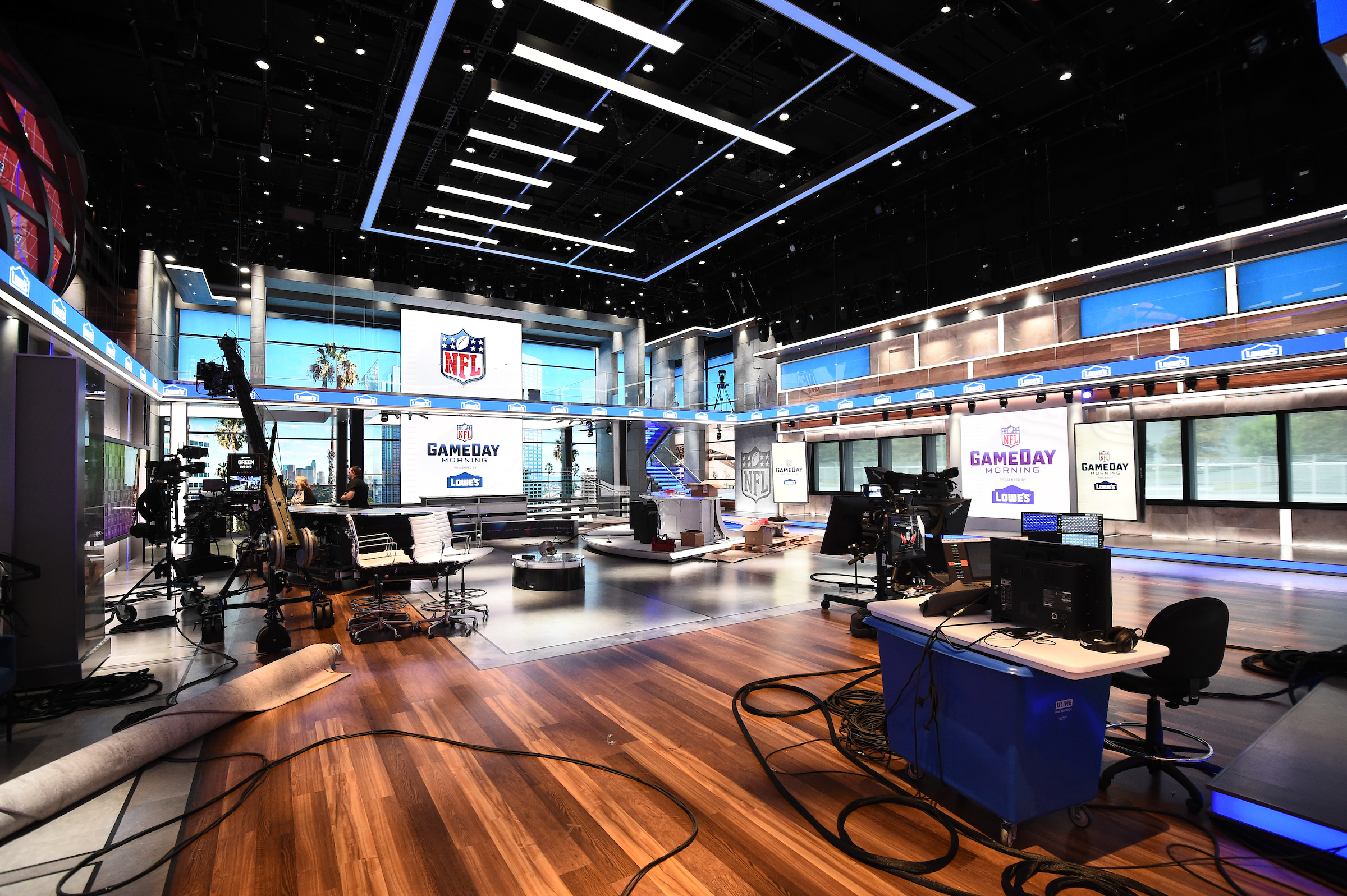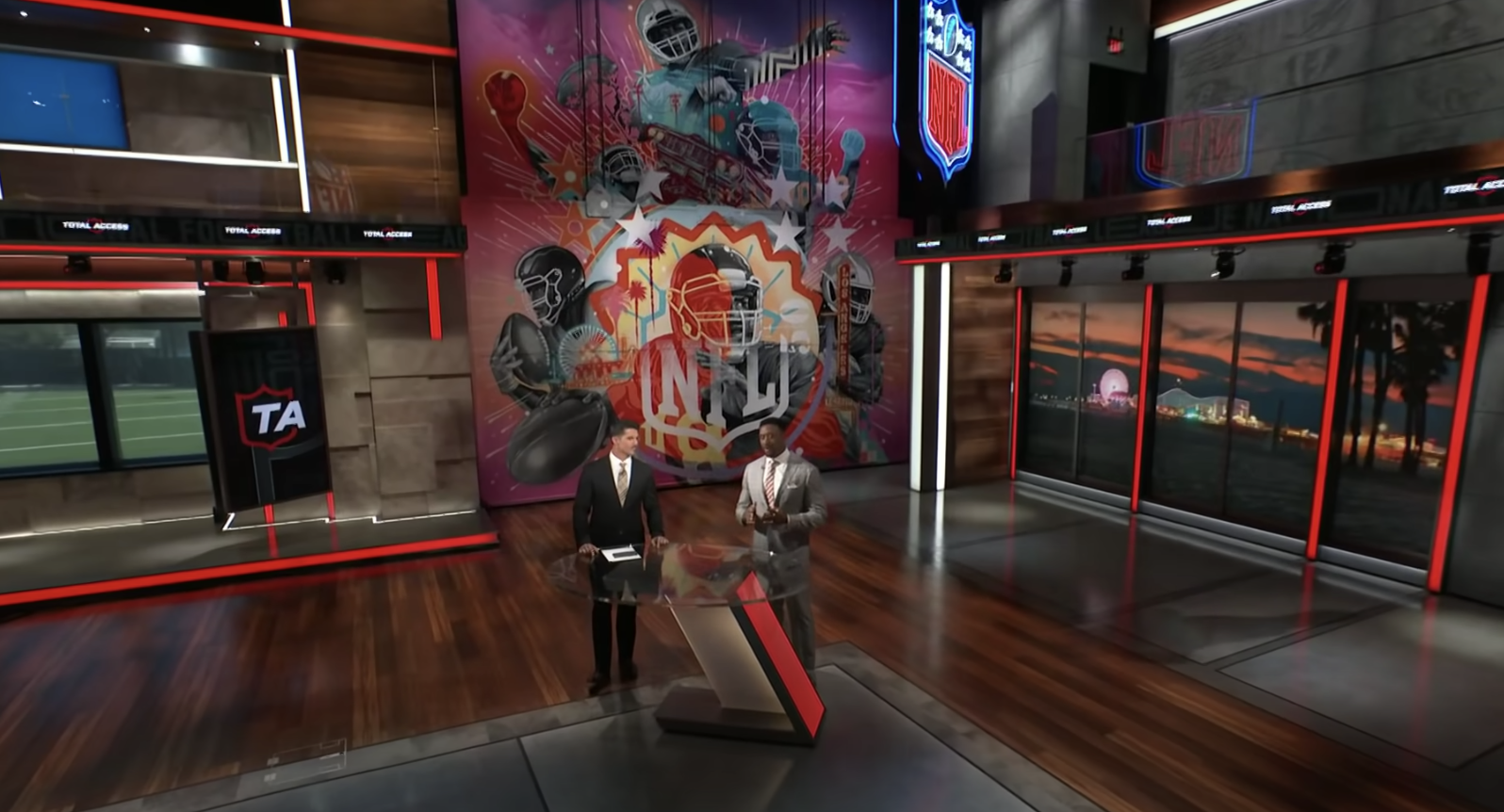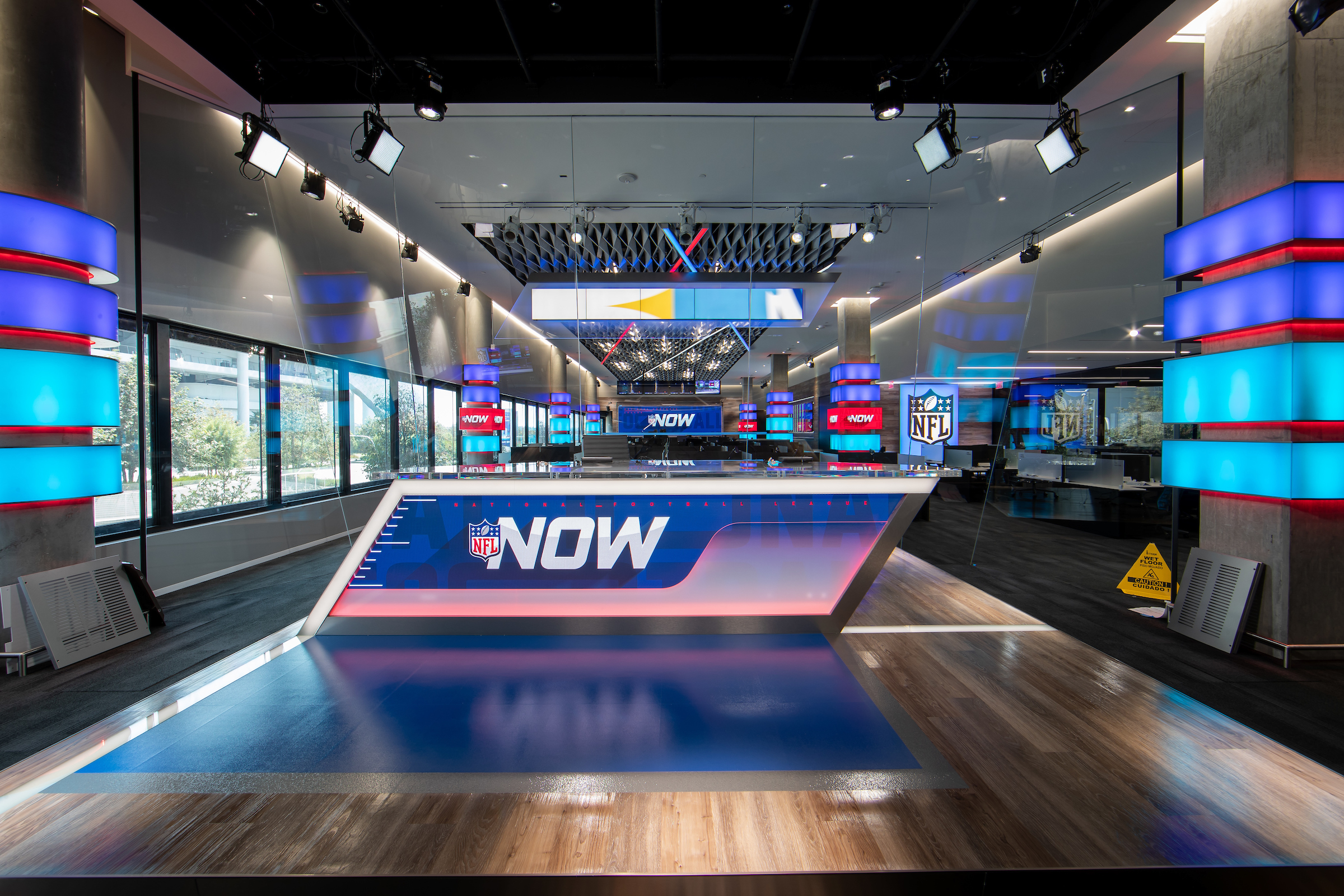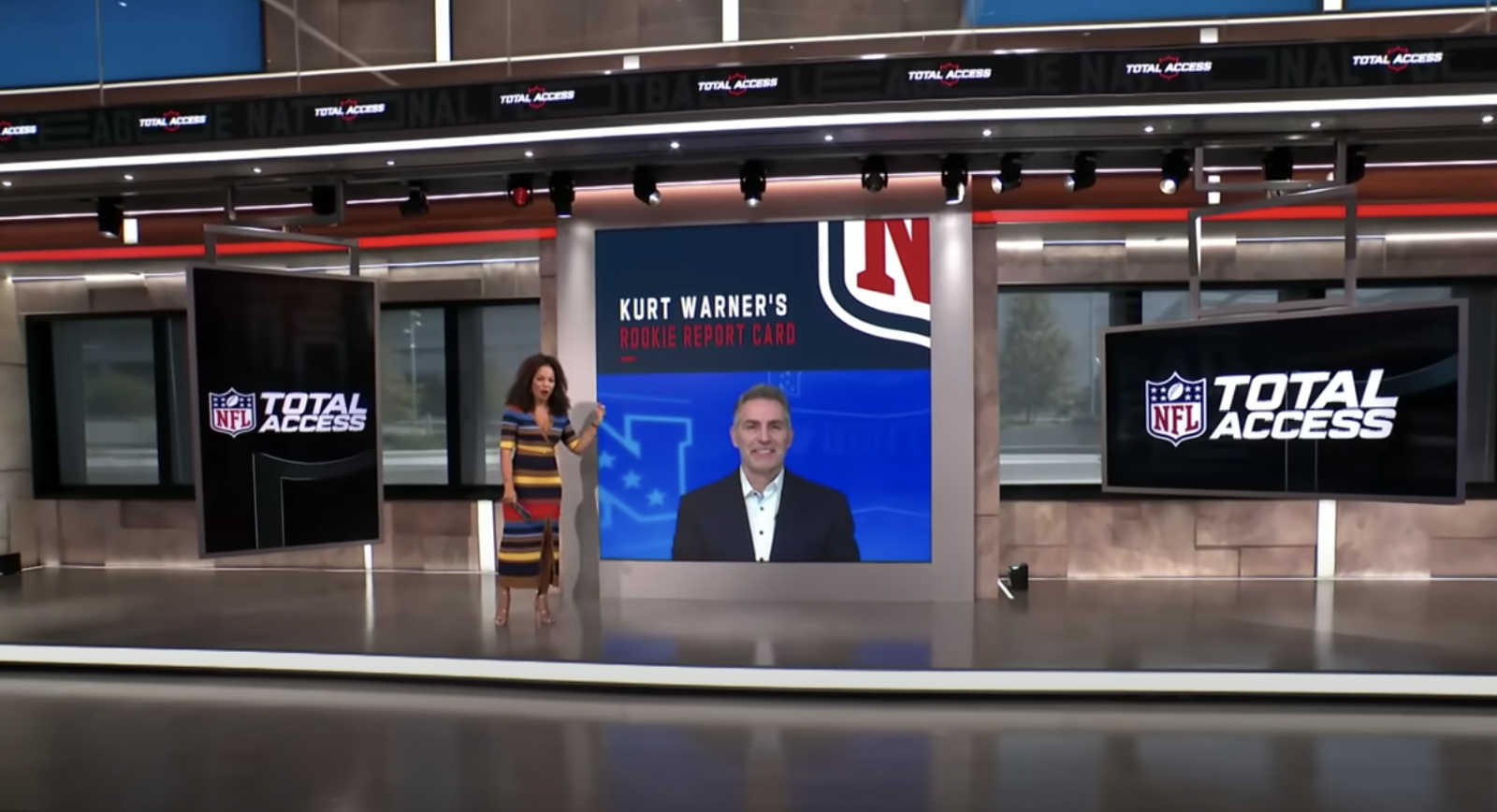NFL Los Angeles Spotlight (Part 2): Inside NFL Media’s New Facility and the Cutting-Edge Technology Behind It
IP-based, 4K- and HDR-capable facility sets a new technical watermark for industry
Story Highlights
The day before the 2021 NFL season kicked off, the league officially opened NFL Los Angeles. The 450,000-sq.-ft. Class A building at Hollywood Park adjacent to SoFi Stadium features 214,063 sq. ft. of office space and 74,922 sq. ft. of studio and studio-support space. As the new home for NFL Network, NFL.com, NFL RedZone, the NFL app, and other media and business operations, the new facility is among the most technologically advanced in the industry.
“When we do tours with people now, we actually look at each other and go, ‘Wow! I can’t believe we did this.’ It’s really quite remarkable,” says Bruce Goldfeder, VP, Engineering, NFL Media. “I think the team that we put together here is the best team in the country in terms of dealing with this [next-generation] technology, and that shows in the final product.”
The state-of-the-art IP-based, 4K- and HDR-capable production facility took nearly four years to conceive, design, build, and integrate based on the SMPTE ST 2110 standard for media-over-IP production. NFL Media is currently producing 1080p60 broadcasts with Dolby 5.1 audio out of the building but is capable of 4K60 with Dolby Atmos 7.4.2 audio and can scale to any format in the future, including HDR or 8K, thanks to its robust IP infrastructure.
CLICK HERE for Part 1 of SVG’s NFL Los Angeles Spotlight, focused on how NFL Media launched facility amid a pandemic.
The Studios: Cavalcade of Stages, Flypacks Provide Flexibility Throughout Hollywood Park
The NFL L.A. production space houses five stages, led by the 5,970-sq.-ft. Studio 1, which serves as the primary studio for NFL Total Access, NFL Gameday Morning, and other marquee NFL Network studio shows.
“Our primary stage is multi-use and very flexible,” says Shaw. “It has windows that you can see SoFi stadium right outside, as well as the demo field that we built with natural turf right outside the building so our talent can walk outside for demos. We’re really excited about what we can do with [a studio] like this.”
The four other production stages, which serve NFL Red Zone and various digital productions, are Studio 2 (6,276 sq. ft.), Studio 3 (3,089 sq. ft.), Studio 4 (1,751 sq. ft.), Studio 5 (1,559 sq. ft.). In addition, the building houses a podcast studio (550 sq. ft.), a voiceover booth (300 sq. ft.) that is podcast-capable, and another four-person desk built inside the NFL Media Newsroom.
Six production-control rooms and audio-control rooms serve the five stages and the podcast studio. Goldfeder and his team also built three portable flypacks, each comprising four cameras and six microphones, that can roll out anywhere in SoFi Stadium or across the Hollywood Park complex.
“All the cameras and control rooms are interconnected so that any camera can be used in any control room,” says Goldfeder. “We can beef up the camera complement per studio depending on our needs. We also have a unified microphone and IFB system that works from anywhere across the entire property, as well as outside. So the talent can go from room to room without changing the microphones.”
IP Backend: Routing, Playout, Postproduction, Audio, and More
The NFL Media production operation is built around a COTS IP routing switch featuring the Magellan SDN Orchestrator (SDNO) to manage the mix of SMPTE ST 2110 IP and HD-SDI baseband infrastructure.

Much of the technology was integrated in Burbank prior to arriving at the new NFL L.A. facility. (Photo: Jeff Lewis/AP Images for NFL)
NFL Media uses an integrated storage and replay-server system for multiple playout uses and installed EVS 12-channel XT VIA production servers across the board for ingest, playout, and quick-turnaround applications — totaling 48 channels of ingest and 48 channels of playback. All media is then input into NFL Media’s Arvato media-asset–management system within 60 seconds of ingest so that editors can immediately access the content.
The NFL postproduction operation consists of 18 high-end edit rooms, two audio-sweetening suites, and 90 VDI thin-client desktop editors that can be accessed from anywhere in the building and even from home.
“We’ve created our own virtual environment here in Inglewood that we can leverage so [editors] can work from anywhere and people can even keep working on their projects from home,” says Goldfeder. “We did 40 TB of content in one day [Sunday of Week 1], and it went well. So now we’re looking at archiving and how we can continue to grow and offload that content.”
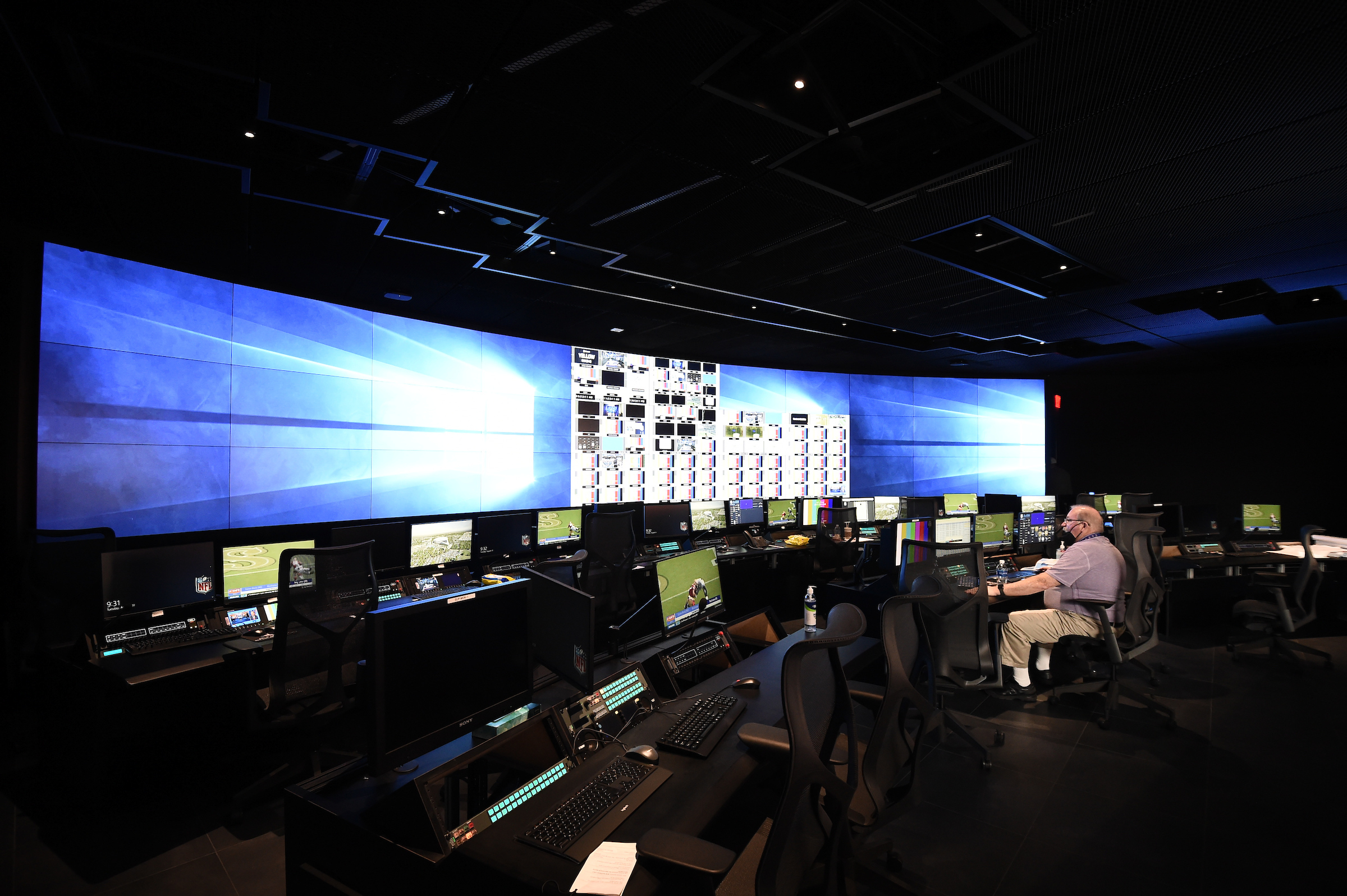
One of six production-control rooms at the NFL L.A. facility (Photo: Dan Steinberg/AP Images for NFL)
On the graphics side, NFL Media also has 70+ graphics-creation stations, including 35 high-powered 3D-graphics systems plus another 35 VDI thin clients.
In terms of audio, all six studios are equipped with SSL audio consoles that are Dante-connected. In all, NFL L.A. has 18,000 Dante connections, 16,000 MADI connections, and 2,048 Riedel intercom channels.
“One of the biggest challenges we had with audio was the different timings between audio and video, but we were able to work through that while we were still in Burbank,” says Goldfeder. “We actually have two different types of PTP — one running the Dante network, the other one running our ST 2110 network — and they live on the same switch. And they have worked very well together.”
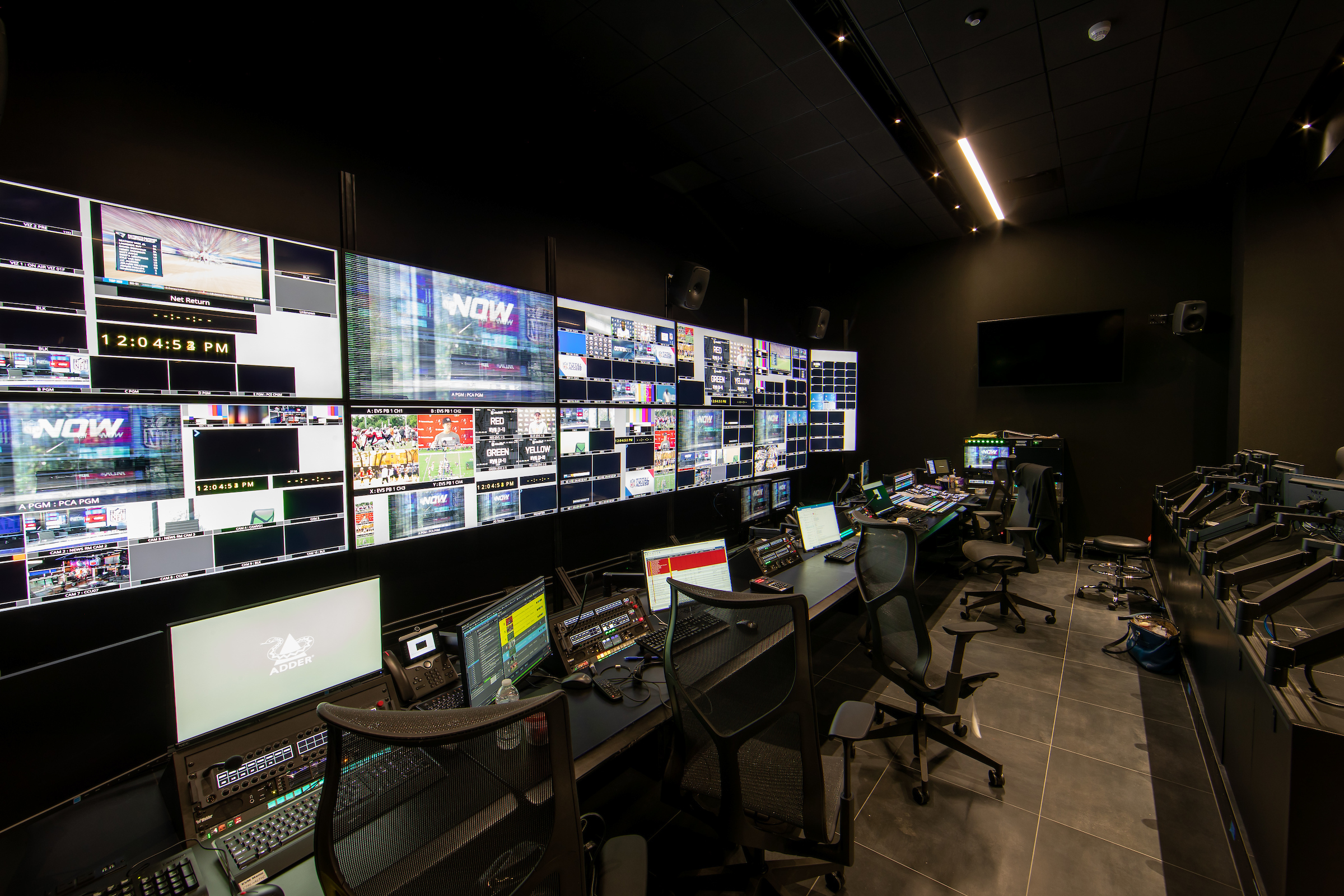
The NFL Los Angeles facility launched in time for the 2021 season despite the pandemic-era challenges. (Photo: Jeff Lewis/AP Images for NFL)
To serve the various operational needs throughout the building beyond just the video-production portion, the NFL created three separate IP networks at NFL L.A. that interconnect with one another: an IT network for back-office needs, a SMPTE ST 2110 Amber/Blue network for broadcast ops, and a production network that connects to NFL Media’s media storage and handles user authentication.
“The production network is in the middle between the IT and the broadcast, Everything meets up there and gets authenticated so that it requires only one sign-in for anybody to access our media,” says Goldfeder. “It’s pretty robust, and it has been working very well and scaled out nicely so far.”
The NFL L.A. building also boasts a dual-power A/B plan with UPS and generators with original power backed up by separate city substations.
Goldfeder adds, “Now that we’ve crossed the hurdle of our first weekend successfully, it’s our job to keep it running continuously. It’s a double-edged sword because, if we failed, it would have been horrible. But since we succeeded, it’s only going to expand faster and faster. And what we’re doing now is expanding and getting more versatility.”
Coast-to-Coast Connectivity: From Hollywood Park to NFL Stadiums and Beyond
NFL Media has 31 direct fiber camera/audio locations (including three “full-set” locations) from the building to SoFi Stadium, as well as six direct fiber camera/audio locations throughout the Hollywood Park complex (including two “full-set” locations).
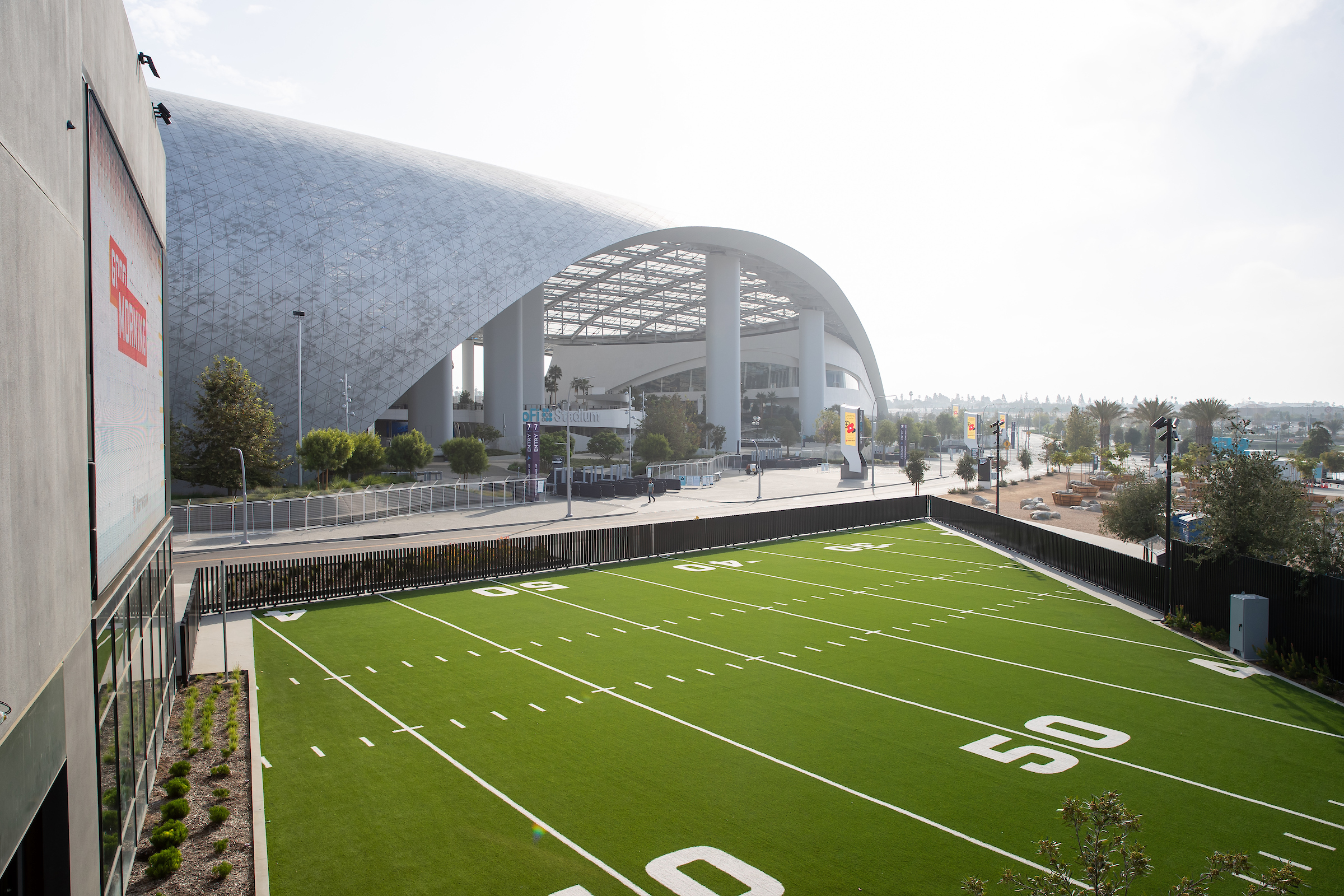
NFL Media erected a demo field outside its new NFL L.A. facility next to SoFI Stadium. (Photo: Jeff Lewis/AP Images for NFL)
The facility is also connected to all 30 NFL stadiums via 10-Gbps interface and all 32 NFL Practice Facilities via Azzurro Team Cam.
NFL Media operates 100-Gbps “hitless merge” triangle connectivity between NFL L.A.; NFL Films in Mt. Laurel, NJ; and its master-control facility at Encompass Digital Media in Atlanta. It also operates 45 Team Cams from on-air talent’s homes.
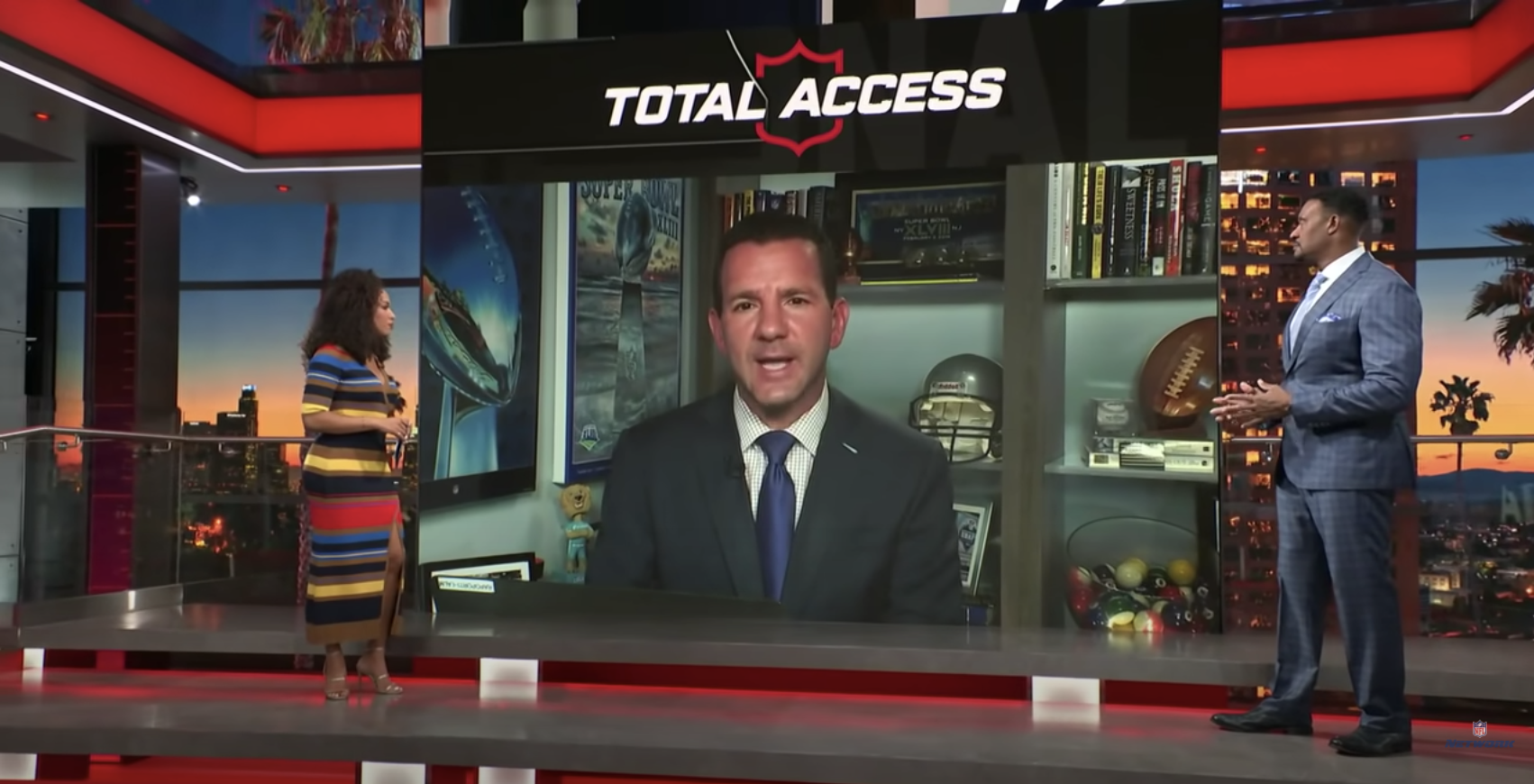
NFL Media operates 45 Team Cams from on-air talent’s homes in order to incorporate them into studio programming.
Transmission Format Capability to/from NFL L.A. handles J2K/HD-SDI, ASI, H.264/265, IP 2110 direct, HDR/SDR, 4K, and SRT. The facility also has direct connectivity to/from all the major transmission providers, including AT&T (J2K/ASI), Lumen (J2K/ASI), Azzurro (Team Cam), and The Switch (J2K/ASI). The building has growth capability for inbound/outbound onsite satellite dishes.
“We have been growing a lot in terms of bringing [feeds] back to the facility, and we now have the ability to do a lot more of that than ever before,” says Shaw. “When you [open a new facility], most people talk about ‘first you walk, then you jog, then you run, and then you sprint.’ After the first week, they’re already sprinting, and we’ve still got a marathon ahead of us this season. But we would expect anything less and wouldn’t want it any other way.”
For more on the new NFL Los Angeles Spotlight, CLICK HERE for Part 1 of SVG’s spotlight series.
